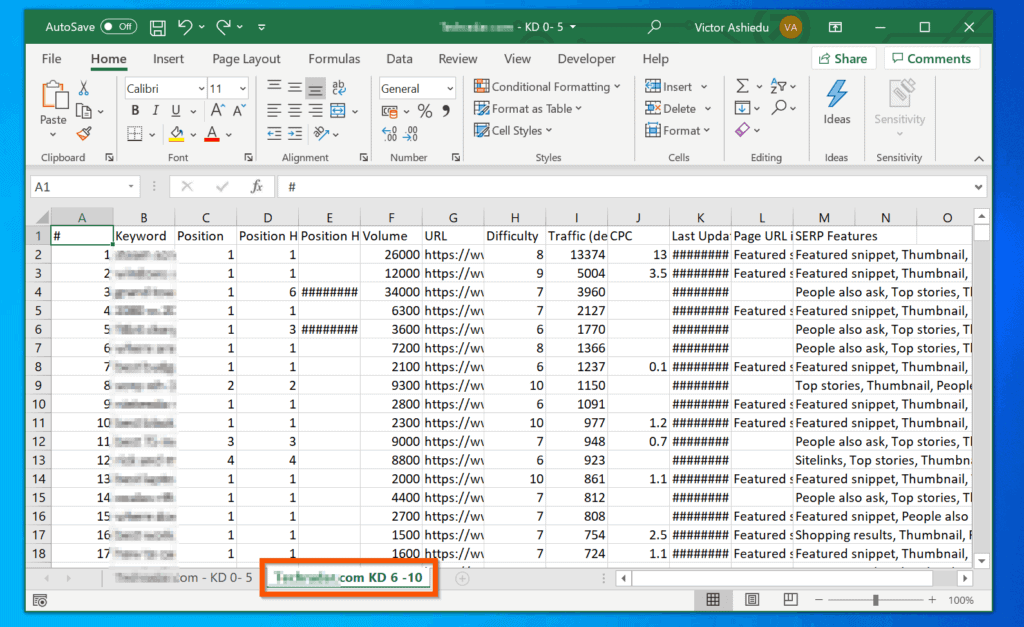5 Easy Ways to Merge Data from Excel Sheets

Whether you're managing financial records, tracking project progress, or compiling customer data, Excel sheets are a fundamental tool for organizing information. However, dealing with data spread across multiple sheets can become cumbersome. Here, we'll explore 5 easy ways to merge data from Excel sheets to streamline your work and enhance productivity.
Method 1: Using the Consolidate Feature

Excel's Consolidate feature is a powerful tool for combining data from multiple ranges within the same or different worksheets.
- Select the cell where you want the consolidated data to appear.
- Go to the Data tab, then click Consolidate.
- Choose the function you need (e.g., Sum, Average, Count).
- Click Add to include the ranges from your sheets, ensuring to select the sheet name before choosing the range.
- Set options like Link to Source Data if you want the consolidated data to update automatically when the source changes.
📝 Note: Use this method when you need to perform calculations across similar datasets. Remember that consolidated data won't update automatically unless you choose 'Link to Source Data'.
Method 2: Power Query

Power Query is an advanced feature that excels at transforming and merging data from different sources.
- Open the workbook containing the data you want to merge.
- Go to the Data tab, and select Get Data > From File > From Workbook.
- Choose the files or sheets you wish to combine.
- Use the Merge Queries option to combine data based on common columns.
Power Query gives you control over how the data is merged, including the ability to filter, sort, and transform data before merging.
Method 3: Macros and VBA

For those comfortable with coding, using Visual Basic for Applications (VBA) can offer a highly customizable way to merge data.
- Open the VBA editor by pressing Alt+F11.
- Insert a new module and write or paste a VBA script to automate the merging process.
- The script could look like:
Sub MergeData()
Dim wbSource As Workbook
Dim wsSource As Worksheet
Dim wsTarget As Worksheet
Dim LastRow As Long, SourceRow As Long, SourceColumn As Long
'Set the source and target worksheets
Set wbSource = Workbooks("SourceWorkbook.xlsx")
Set wsSource = wbSource.Sheets("Sheet1")
Set wsTarget = ThisWorkbook.Sheets("Sheet1")
'Find the last row in the target sheet
LastRow = wsTarget.Cells(wsTarget.Rows.Count, 1).End(xlUp).Row
'Loop through each row in the source sheet
For SourceRow = 2 To wsSource.Cells(wsSource.Rows.Count, 1).End(xlUp).Row
For SourceColumn = 1 To wsSource.UsedRange.Columns.Count
wsTarget.Cells(LastRow + SourceRow, SourceColumn).Value = _
wsSource.Cells(SourceRow, SourceColumn).Value
Next SourceColumn
Next SourceRow
End Sub
Method 4: Using Excel Add-Ins

Add-ins like Kutools for Excel or Ablebits Ultimate Suite provide ready-to-use tools for merging spreadsheets:
- Install and activate the add-in of your choice.
- Select the files or sheets you wish to merge.
- Use the provided merge options to combine data.
Method 5: Manual Copy and Paste

The simplest method, although time-consuming for large datasets, involves manually copying and pasting data.
- Open both sheets side by side or in separate windows.
- Copy the relevant data from one sheet.
- Switch to the target sheet and paste the data.
This method allows you to selectively choose what data to merge but can be prone to errors if done manually.
By utilizing these methods, you can efficiently combine data from multiple Excel sheets, saving time and reducing the potential for data entry errors. Each approach has its merits, and choosing the right one depends on your specific needs, technical comfort level, and the complexity of the data merging task at hand.
Which method is best for small datasets?

+
For small datasets, manual copy and paste or using the Consolidate feature might be the quickest and most straightforward methods.
Can I automate the merging process?

+
Yes, using Power Query or VBA macros allows for automation of the data merging process.
What if my sheets have different structures?

+
Power Query offers the flexibility to transform data before merging, which is ideal for sheets with different structures. VBA can also be customized to handle variations in structure.
Do I need to keep source files open during the merge?

+
Not necessarily. With Power Query and some add-ins, you can work with closed workbooks, but VBA might require you to open them or reference them in your code.



